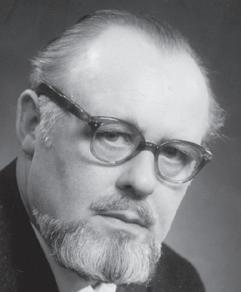GUNNAR DE FRUMERIE
Circulus Quintus (1965) Dur: 60´
The pedagogically-conceived Circulus Quintus consists of 24 exquisitely varied, romantic character pieces in all keys. This music is permeated by a feeling of lightness, playfulness and fantasy. Here we find inspiration from Baroque dances like Gavotte and Saraband, as well as from folk-music idioms. Also, there are pieces that are more evocative of moods such as Nocturne and Pastoral.
MIKKO HEINIÖ
April Evenings for Black
Twins – Sonata for two pianos (2015) Dur: 15’
A virtuoso piece in five movements of timbral and rhythmic pleasure, in true Heiniö fashion. The world of sound is sumptuously colourful and the steady pulse and drive reflect Heiniö’s love of running. The division between two equal piano parts is so skilfully done that the overall effect is of one big instrument.
EINOJUHANI RAUTAVAARA


ARR. PETER LÖNNQVIST



Cantus arcticus – Duet for Birds and Piano (1972/2012)
Dur: 18’
This transcription for piano of the work by Rautavaara most often performed enables pianists to immerse themselves in the magical world of the Cantus arcticus. It admirably captures the essence of the colourfully impressionistic harmonies and warmly romantic melancholy. The bird soundtrack can be downloaded.
HEIKKI SARMANTO
Impressions de Paris / Paris
Impressions (2003) Dur: ca 67’
20 pieces for piano dedicated to French chansonnier Allain Leprest. Their charming sound is like a declaration of love to Paris. The jazzy suite represents Sarmanto’s piano music at its very best, with its intoxicating, nostalgic melodies. He wrote the Impressions while living in Paris, and themes inspired by the city alternate with improvised variations and yet more melodies.
ALBERT SCHNELZER
Playground (2021) Dur: 15´
Five challenging pieces focusing on playfulness. In the first Debussy meets the cartoon character Bart Simpson; in the second Bach meets Prokofiev, when the right and the left hand are playing tag. The slow third movement is a meditation on how children see magic in everything; the fourth takes us on an adventurous merry-go-round ride; and finally, in the fifth movement, there is a chase after horrible Goblins who love to dance.
MARTIN SKAFTE

12 Preludes – book one (2012/13) Dur: 29’
12 Preludes – book two (2015/17) Dur: 32’
Inspired by Debussy, Skafte exploits the colours and sonorities of the piano but also requires Lisztian virtuosity and pulls in a range of further influences, among them ragtime and Ligeti. A sly sense of humour can often be detected in the background.
BENJAMIN STAERN
Dropwaves (2016/17) Dur: 15´
An overwhelming, exuberantly constructed piano sonata in three movements which playfully surges and gushes forth. There are also idle, meditative sections in which Staern makes use of e-bows to create bourdon tones. Composed in memory of Olivier Messiaen and dedicated to pianist David Huang.
STAFFAN STORM
Lied vom Meer (2009) Dur: 15’
Piano suite in four movements based on Rilke’s poem Lied vom Meer. The work’s form and melodic patterns follow those of the poem. Storm describes this as a musical reading of the text. The music has an impressionistic tinge, especially in the exquisite final movement … im Mondschein… where Storm lets the melodies and harmonies flow; but he ends in the sea, black as night, in the lowest register of the piano, rumbling softly.
MATTHEW WHITTALL
Leaves of Grass (2005-09)
Dur: ca 63’
In these 12 preludes inspired by Walt Whitman’s verses, the piano sings in a fascinating way. The music reflects composers which Whittall has admired: there are heroic arpeggios reminiscent of Chopin seen through a pop-minimalist prism or clangorous white-key chords familiar from Debussy. The pieces are brilliant examples of Whittall’s colourful imagination and originality. They can be performed as a grand, one-hour suite or on their own or in any selections.
VICTORIA YAGLING
Autumn Diary (2003) Dur: ca 8’
A richly colourful suite of wistful, pungent autumnal tones. More tranquil movements tinged with singing melancholy alternate with faster ones. The piano writing is both mellow and translucent, and it seems to spring naturally from the very depths of romanticism, even in the most challenging sections.




